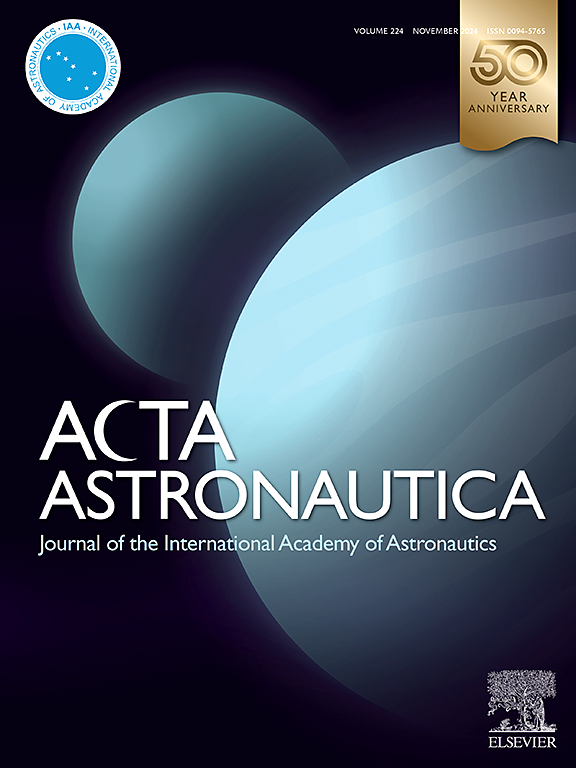固体推进剂储罐液-气界面的声学探测
IF 3.1
2区 物理与天体物理
Q1 ENGINEERING, AEROSPACE
引用次数: 0
摘要
提出了一种基于振动的推进剂储罐液-气界面检测方法。介绍了一个理论框架来预测安装在水箱壁上的膜片传感器在宽带声激励下的振动响应。该理论预测了当界面移动超过传感器位置时,在湿润和干燥条件之间的响应转换形式。液-气界面的瞬时位置与测量的均方根(RMS)响应信号之间的关系以无标度的方式建立,不依赖于罐或流体的物理性质。采用改进的欧拉-伯努利光束方法,建立了一个计算模型来模拟传感器响应,并将界面视为光束上两个不同质量密度之间的边界。对某模型推进剂储罐的实验结果表明,在4% - 90%填充量的测量范围内,液-气界面检测的平均误差为0.7%。这些发现表明,在稳定条件下,液体-蒸汽界面检测是一种很有前途的非侵入性技术,在适当的空间环境工程资格之后,在航天器推进剂管理和空间加油系统中具有潜在的应用前景。本文章由计算机程序翻译,如有差异,请以英文原文为准。
Acoustic detection of the liquid–vapor interface in settled propellant tanks
This study presents a vibration-based method for detecting the liquid–vapor interface in settled propellant tanks. A theoretical framework is introduced to predict the vibrational response of patch sensors mounted on the tank wall and actuated by a broad-band acoustic excitation. The theory predicts the form of response transitions between wetted and dry conditions as the interface moves past the sensor location. Relationships between the instantaneous location of the liquid–vapor interface and the measured root-mean-square (RMS) response signal are established in a scale-free manner that does not depend on physical properties of the tank or fluid. A computational model, implementing a modified Euler–Bernoulli beam approach, is developed to simulate sensor response, with the interface treated as a boundary between two distinct mass densities on the beam. Experimental results, obtained from a model propellant tank, show that the liquid–vapor interface is detected with an average error in the full tank volume estimate of 0.7% across the measurement range from 4% to 90% fill. These findings demonstrate a promising non-invasive technique for liquid–vapor interface detection in settled conditions, with potential applications in spacecraft propellant management and in-space refueling systems following appropriate engineering qualification for the space environment.
求助全文
通过发布文献求助,成功后即可免费获取论文全文。
去求助
来源期刊

Acta Astronautica
工程技术-工程:宇航
CiteScore
7.20
自引率
22.90%
发文量
599
审稿时长
53 days
期刊介绍:
Acta Astronautica is sponsored by the International Academy of Astronautics. Content is based on original contributions in all fields of basic, engineering, life and social space sciences and of space technology related to:
The peaceful scientific exploration of space,
Its exploitation for human welfare and progress,
Conception, design, development and operation of space-borne and Earth-based systems,
In addition to regular issues, the journal publishes selected proceedings of the annual International Astronautical Congress (IAC), transactions of the IAA and special issues on topics of current interest, such as microgravity, space station technology, geostationary orbits, and space economics. Other subject areas include satellite technology, space transportation and communications, space energy, power and propulsion, astrodynamics, extraterrestrial intelligence and Earth observations.
 求助内容:
求助内容: 应助结果提醒方式:
应助结果提醒方式:


